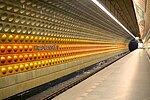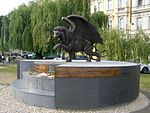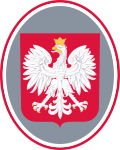Villa Bílek

The Villa Bílek (Czech: Bílkova vila) is a house designed by the Czech sculptor and architect František Bílek in 1911. The villa is located in Hradčany neighbourhood of Prague, Czech Republic, several minutes walk from Hradčanská metro station or Prague Castle. It was designed originally for Bílek himself as his residence and studio. Located on site of former city walls (see preserved Písek Gate nearby) the villa has an unusual shape resembling trace of a scythe in a field. The brickwork masonry is articulated by pillars in form of corn sheaves which evoke Egyptian architecture. Through this building Bílek, who was a deeply religious artist, tried to express his view on substance of life. Villa Bílek has been maintained by Gallery of the Capital City of Prague (Czech: Galerie hlavního města Prahy) since 1963. It houses a public exposition that introduces many works by Bílek, as well as original interior fittings and furniture collection which was made according to his design.
Excerpt from the Wikipedia article Villa Bílek (License: CC BY-SA 3.0, Authors, Images).Villa Bílek
Chotkova, Prague Hradčany
Geographical coordinates (GPS) Address Nearby Places Show on map
Geographical coordinates (GPS)
| Latitude | Longitude |
|---|---|
| N 50.095 ° | E 14.408333333333 ° |
Address
Chotkova
Chotkova
118 01 Prague, Hradčany
Prague, Czechia
Open on Google Maps









